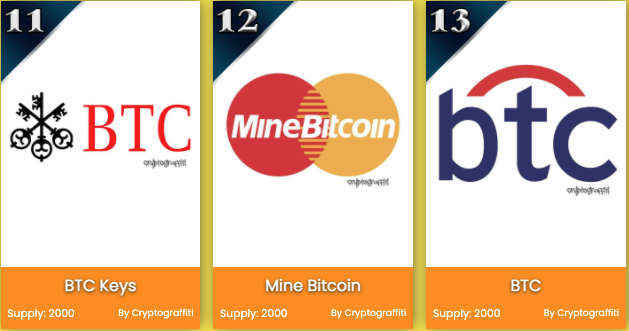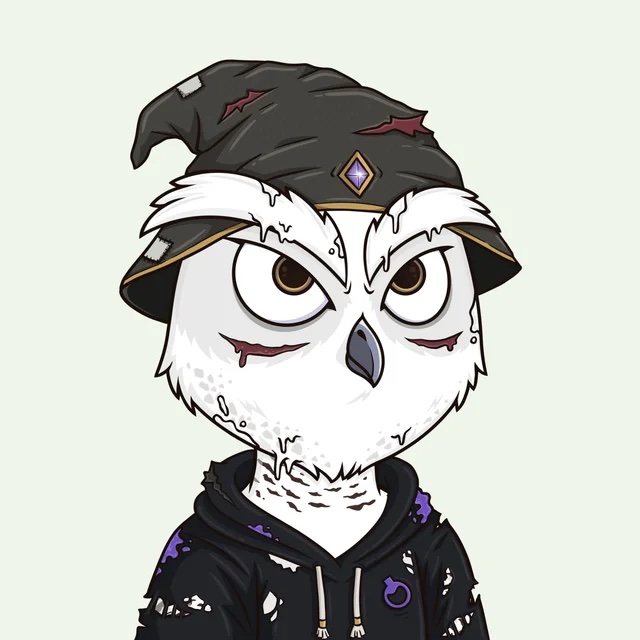The Story Behind The First Art NFT Released on Ethereum — A Detailed History of Curio Cards
August 30, 2021 - 15 min read
This article provides a detailed history of Curio Cards, the first digital art on Ethereum. This article covers how the idea was born to how it was released to the public and everything in between.

Updated 7/4/2022
If you are interested in NFTs or own NFTs, we strongly encourage our readers to consider purchasing a hardware wallet, which starts at $59. Hardware wallets like the Ledger S or Nano X are the most effective ways to protect your NFT assets from scams. The following link contained below is an affiliate link and we may receive a small commission if you choose to purchase one.
If you want to protect yourself and your NFTs from scams and hacks, you can shop for Ledger Hardware wallets by clicking here.
Introduction
On May 9th, 2017, the Curio Cards digital art gallery was released to the public on Ethereum. The project was created by Thomas Hunt (Mad Bitcoins), Travis Uhrig, and Rhett Creighton, a group that has long-standing roots in the cryptocurrency world.
When Curio Cards was released in 2017, it was meant to solve a problem for digital artists: monetizing their work directly.
Thus, Curio Cards became the first project to conceptualize displaying a permanent art gallery that enabled artists to sell their work without a middleman taking a cut of the profits.
It was a radically innovative idea at the time, but the environment was different back then and one of the founders said “no one cared” and that “people didn't care enough to hate it.”
That has changed now as people have come to recognize the historical significance of the project and its original intentions. In the past 7 days, 4,382 Curio Card transactions accounted for $42.25 million in sales volume.
Update: As of 1/16/22 Curio Cards has had another surge with 1,075 ETH in sales volume which is about $3.3 million. I still, however, don't know the meaning of curio. I believe it means curiosity, but I will have to follow up with the founders!
This article is a collation of various sources to provide a rich history about the first-ever digital art on Ethereum. For those interested in learning more about the project’s backstory and acquiring cards in the set, this is for you.
As I’ve said before, you should always do your own research and not buy what I buy (I own a few Curio Cards). However, this research should help you with making an independent decision.
As you evaluate projects, keep in mind that while NFTs are becoming more commonplace in 2021, it was a different story in 2017, which is why many are developing more appreciation for Curio Cards.
The founders said they “put a lot of effort into it. A lot of heart. A lot of time” and ultimately, there was little response from the market, but this effort paid off in the long run.
While it may seem second nature to us now, the founders of this project saw what blockchain technology could become and took a chance to use the new technology to help break down barriers for artists.
Even though it happened four years later, the project has become a widely recognized catalyst for the modern-day NFT that’s taking our culture by storm.
It was also recently announced that a full set of 30 Curio Cards + 1 misprint card is heading to the world-famous Christie’s Auction House on October 1st in New York City, which has given the project further validation and attention.
If you are interested in looking at what Curio Cards are available for sale, use this link and make sure you buy from the project with the blue checkmark:

Source: Opensea.io
How Curio Cards Were Born
Thomas Hunt, also known as Mad Bitcoins, has been an OG YouTuber in the Cryptocurrency space since 2013. Hunt met co-founder Travis Uhrig at a San Francisco Bitcoin meet-up and the two co-hosted a physical art gallery, which they said was a lot of fun.
About a year later, they wanted to do another art gallery but wanted to try doing it online, with the goal of reaching people outside of San Francisco and helping digital artists get more exposure.
At the time, the meme-NFT project, Rare Pepes had launched on Counterparty, which sat on top of Bitcoin, but it had technical limitations.

Source: Vice
It’s important to note that Curio Cards are recognized as the first digital art to sit on top of the Ethereum blockchain. This is a distinction from Rare Pepes (an example seen above), which was based on the Pepe the Frog meme character originally created in 2005 in a comic.
Hunt had some intuition about collectibles because he collected Magic: The Gathering cards and baseball cards, so he recognized an opportunity to bring this concept to the blockchain.
The founding team noticed that each Rare Pepe card was limited to the greenish tint of original the character, which didn’t offer a lot of variety. He also noticed that various hate groups were using the character’s imagery.
It was this mixture of observations that inspired him to bring elements of collectible trading cards and artwork to the Ethereum blockchain both to help artists distribute their work with a token-based model that signified ownership and mitigated any risk of counterfeiting and copying of the work.
Despite concerns about Ethereum’s scalability, the team decided it was the right blockchain for the Curio Cards project. Creighton originally thought about making Curio-ETH fork, but Uhlrig realized it would have left his digital trading card idea “orphaned” on its own chain.
Ultimately, the final decision was made to release the project on Ethereum, and little did they know, that decision would become a significant part of NFT history.
A Former Child Actor Turned Nuclear Engineer Brought The Vision to Life
Hunt and Uhlrig had the inherent understanding of the collectible market from his previous experiences in trading card games and sports cards but needed someone to bring the Curio Cards concept to life.
He and Uhlrig turned to Rhett Creighton, a former child actor (Crocodile Dundee 2) who eventually became a trained nuclear engineer.
Conceptually, this was the first endeavor to put art on Ethereum and Creighton was the one who executed its technical aspects.
Because this project was released in 2017, there were no best practices or standards for smart contracts (think of these as digital ownership agreements) on the blockchain, so Creighton invented one.

Source: OpenSea
At the time, the art was wrapped inside the digital tokens, and while that concept is understood today, Uhlrig spoke about how it was a “wild concept” at the time and that he needed to continually explain to investors, podcast hosts, and anyone who interviewed him how the technology worked.
Curio Cards was the first NFT project to use IPFS (decentralized file sharing) in order to make this new ownership model work.
The project was released before Opensea.io came out, so the art was stored in digital tokens that didn’t meet current standards. After the project was rediscovered in 2021, the team realized that the cards needed to be wrapped in an upgraded smart contract to be bought and sold on Opensea.io, the dominant peer-to-peer marketplace for NFTs.
This has caused some confusion for people discovering the project, so we’ll keep the impact summary simple:
(1) Newly wrapped cards show as “minted” on Opensea — the supply of Curio Cards is fixed forever, no new cards are being minted (all were minted in 2017), they are being wrapped
(2) A portion of the supply for some cards is lost because of a faulty wrapper
(3) The entire supply of Curio Cards is not active on Opensea.io — this means there are cards sitting in wallets that have not yet been wrapped. It could be that a person forgot s/he bought these cards four years ago, that they can no longer access their wallet, or that they aren’t ready yet to upgrade the wrapper. There are details here about inactive wallets
How Curio Cards Found Artists
Originally, the team wasn't quite sure what art they wanted to feature. After feeling out some ideas, they decided to replicate digital prints because that’s what got the most engagement at their physical art show the year prior.
They also didn’t know how much supply to produce, so they left it up to the people and artists to decide how many by using a burn mechanism. Curio is a double meaning for “curiosity” and “curated”, so they wanted buyers and artists to curate the supply.
Each week, they released cards with a fixed supply, and whichever copies didn’t sell by the end of the week were burned (no longer exist). Ironically, that means cards with low supply today (which are selling for much higher prices) were the least popular four years ago (except for cards initially released with low supply).
There were 7 artists featured in the Curio Card project and 100% of all Curio Card sales from the original vending machine went back to the artists (including current sales). The creating team of Curio Cards demonstrated their mission to support artists by taking 0% of those sales. After the project’s rediscovery, Uhlrig ensured that a 1% royalty fee would be paid out to artists on secondary sales that happen on Opensea.io today.
What’s most fascinating is that this set of artwork features a collection of elements we see in modern NFT projects — hand-drawn prints digitized, photography, meme-art, persona art, event-based art, and video game character art.
Cards 1–10 were commissioned by the artist Phneep. Phneep knew the team because he would create parody movie poster art for the Mad Bitcoins show. They weren’t sure what the end result would look like, but they asked the artist to tell a story about the progression of art with the first 10 cards. Phneep also created cards 14–16, and 20.

Source: gallery.curio.cards

Source: gallery.curio.cards
The next 3 cards (11–13) were created by Cryptograffiti, who was in the physical art show Thomas and Travis hosted the year prior.

Source: gallery.curio.cards
Cryptograffiti’s directive was to create whatever he wanted, and he decided to use art from stickers he would create and put on ATMs and other public places, which were dubbed “bitcoin propaganda”.
Cryptopop created the dog-themed Curio Cards. There were some issues with these cards on the vending machine (the original marketplace for Curio Cards), so there was a change made on the contract. When Rhett deployed the contracts, cards 18 and 19 didn’t work. They were fixed and redeployed, but there are actually two functioning copies of 17. The first copy is referred to as 17b the “misprint” card.
Cryptopop was very detailed in his art, and in card 19 there are a few nuggets you might miss at first glance. If you look closely, there’s a dog passing a privacy coin (Monero) under the table- there’s a symbol of known coins produced in 2017 (some still relevant, others not).

Source: gallery.curio.cards
Card 20, created by Phneep was an experiment, almost like a Patreon for people to sponsor Mad Bitcoins (he was going to use it to buy camera equipment for his show) — it was a way for a creator to develop a token to self-fund content projects.

Source: gallery.curio.cards
Robek created cards 21–23 and was an artist the founding team did not know. The team was working toward artists coming to them so they could be launched as NFT artists. The idea was that if you were a talented artist, all you had to do was show up and you’d get a chance to be in the project. Robek was the first person to show up in the Discord and was really excited. Robek didn’t need convincing and so they told him to make art.

Source: gallery.curio.cards
Robek had been doing parodies of Curio (the raccoon) mascot, so he did more parity art. Card 21 is the persona of Thomas, 22 is the persona of Travis, and 23 is the persona of Rhett.
Robek released a commercial to go along with the cards — following the idea of the video game element.
He also decided on his supply and realized collectors would want to hold the 3 cards that made up his set. He decided on a supply of 500 cards each for 21 and 22 but reduced the supply of 23 to incentivize collectors to buy it first. His collection sold out on its release.
Daniel Friedman created cards 24–26. He was another first because this art was hand-drawn. The founders hosted a Google form looking for artists and Friedman shared his work. They loved it so he was selected for the project.

Source: gallery.curio.cards
Travis said he didn’t meet or speak with Daniel until 4 years later, which makes for a cool story given the rediscovery and popularity of the cards today.
Marisol Vengas was an art collective by Max Infield. A bunch of artists got together in Max’s studio and used real-world photography with artistic enhancements to create these cards.

Source: gallery.curio.cards
Card 30 was created by Thors of Myr who is a very private artist and wishes to remain anonymous even to this day. Card 23 was the first animated GIF on Ethereum, but for card 30 they pushed the file size limitation to allow for more animation. The card has a supply of 821 because it was designed and released based on a real-world eclipse that took place on 8/21/17.

Source: gallery.curio.cards
If you want a detailed breakdown of the meaning behind each card in the set, check out this article.
The XCOPY Submission
This is an update based on some new information that came out today if you have made it this far, you are in for a treat.
XCOPY, a renowned NFT artist, who sold "A Coin For the Ferryman" from 2018 sold for 1,330 ETH. That's 6.03 million dollars.
It sold for just $139 back in 2018, which is a wild appreciation but is well-deserved.
XCOPY is an anonymous London-based artist with a few multi-million dollar sales who landed at 13 on Fortune's list of most influential people in the NFT space.
XCOPY sent out a tweet today saying that he submitted his art to the Curio Cards team but it wasn't accepted into the project:

Source: Twitter
There has been some debate in the Discord about why it's been over a year and this wasn't made public and I do not have confirmation from the Curio founders, but it goes to show that Curio was around before extremely popular artists like XCOPY blew up. The project has a rich history.
Update: This has been confirmed by Curio Card founder Travis Uhrig:

Source: Twitter
The Initial Product Launch
The cards were initially sold via a novel vending machine concept (with cards displayed as a gallery, like a vending machine) with new cards released every Tuesday (except card 30, which was released on a Thursday, the same day as the 8/17 eclipse took place in North America).
Each week, the founders would release a “New Card Tuesday” video to help promote new cards in the set:

Source: Twitter

Source: Twitter
Similar to a modern-day NFT “drop” users could purchase cards for a low price directly from this vending machine.
Some artist sets sold out fully, but others didn’t sell out the released supply. What’s unique about this 2017 project is that the entire supply today was minted in 2017. Even if a card didn’t sell back then, it was still minted and holds significance in NFT history.
The creating team wanted everyone to have a chance to be involved and get exposure into a project and are happy that there is enough supply for there to be entry points for people who may not have a lot of Ethereum to spend.
Key Takeaways
The founders of Curio Cards recognized that blockchain technology had the potential to give thousands of artists a path to make a career out of their work, thus bringing the world a more diverse platter of creators who were no longer held back by traditional barriers to entry.
As NFTs evolve and become more mainstream, this concept is the most tangible difference-maker with the technology and is why so many see the massive potential for real-world applications.
NFTs are the great equalizer, giving everyone a chance to create, sell and buy works from artists, photographers, musicians, gamers, etc. in any part of the world with internet access.
Personally, I do not yet think the vast majority of people realize that Thomas, Travis, and Rhett recognized this four years ago and created a project based on an idea that will re-shape our culture entirely.
No one can predict the future and no one should spend more money than they can afford to lose, but the spirit of Curio Cards is to support creators from all walks of life — everyone who buys an NFT to support an artist is embodying their original mission.
Even if you don’t own Curio Cards and don’t like the project, you are still contributing to their original mission by purchasing an NFT from a creator.
Newsletter
Enter your email address below to subscribe to my newsletter
latest posts





